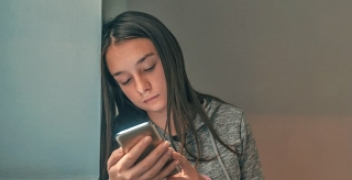CYBERBULLYING
Children and teens spend a significant amount of their time online, engaging in learning, socializing, and playing games for hours each day. Given the amount of time they spend online, an increase in online aggression and cyberbullying has been observed. A 2025 survey revealed that approximately 58% of 13 to 17 year old students surveyed reported that they experienced cyberbullying at some point in their lifetimes. Cyberbullying involves intentional aggressive behaviors, both verbal and relational, towards a targeted peer using digital technology. It is intended to embarrass, belittle, insult, or threaten another person.
Cyberbullying is carried out via the following modalities:
- Social Media posts
- Texting
- Online messaging
- Online gaming
A child who cyberbullies can have a power advantage from their ability to be anonymous, from their more advanced computer and technology skills, or from the size of their online following. They may exert their power through sending mean text messages, posting aggressive comments on social media, or uploading embarrassing videos to social media platforms like TikTok. Children and teens are vulnerable to cyberbullying when they chat online through video games.
Cyberbullying is difficult for parents and school staff to detect, because it often occurs when they are not around, they are less likely to see or overhear the bullying taking place. And, cyberbullying is under-reported to adults because kids fear losing access to their electronic devices. This makes it vitally important that adults initiate conversations with the children and adolescents in their lives about cyberbullying and advise them on what to do if they experience it.
The Impact of Cyberbullying
Cyberbullying is as serious as traditional in-person bullying (relational, verbal, and physical) because the emotional effects on the child or adolescent being bullied are just as devastating, if not more. Victims of cyberbullying can develop anxiety, depression, stress, low self-esteem, academic and behavioral problems at the time of victimization and beyond. For youth who have been targeted with cyberbullying, the cruelty can feel inescapable—home is no longer a safe haven, since they are reminded of the bullying when they look at their phones or computers.
Cyberbullying poses distinct challenges when compared to traditional in-person bullying. The aggressor can hide their identity, making it hard to figure out how to stop the cyberbullying. There can be a large audience, because hurtful posts and videos can go viral. Additionally, the hurt can be ongoing, because the content posted is public and may never be completely erased. This can make it difficult for victims to move on from the incident.
School staff find it especially difficult to intervene with this form of aggression. The impact of cyberbullying that occurs outside of school hours and away from school grounds often bleeds into the school day, as kids talk about what happened. Cyberbullying requires technological savvy skills to investigate and respond to, but it is important that school leaders take action when they learn of cyberbullying that was likely committed by one of their students. Discouraging all forms of aggression is a key component of building and maintaining the strong, positive school climate that allows students to achieve their highest potential.
There are strategies that parents, caregivers, and youth themselves can take to handle cyberbullying. Read more in this CHOP fact sheet.






